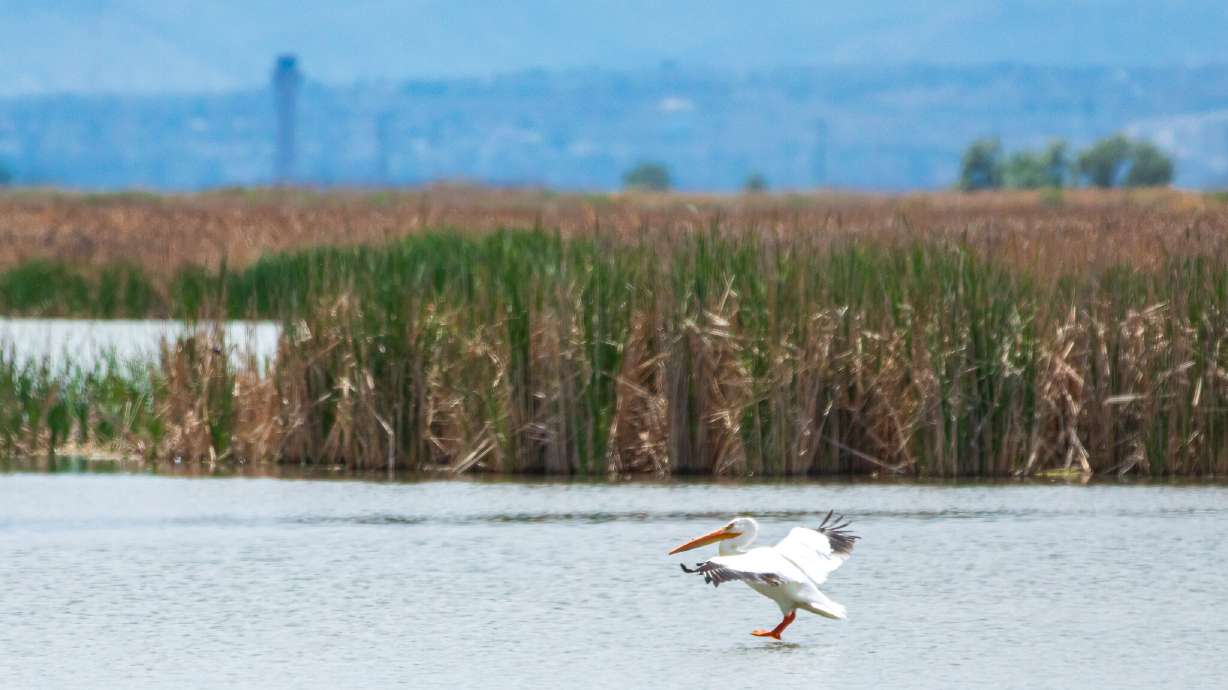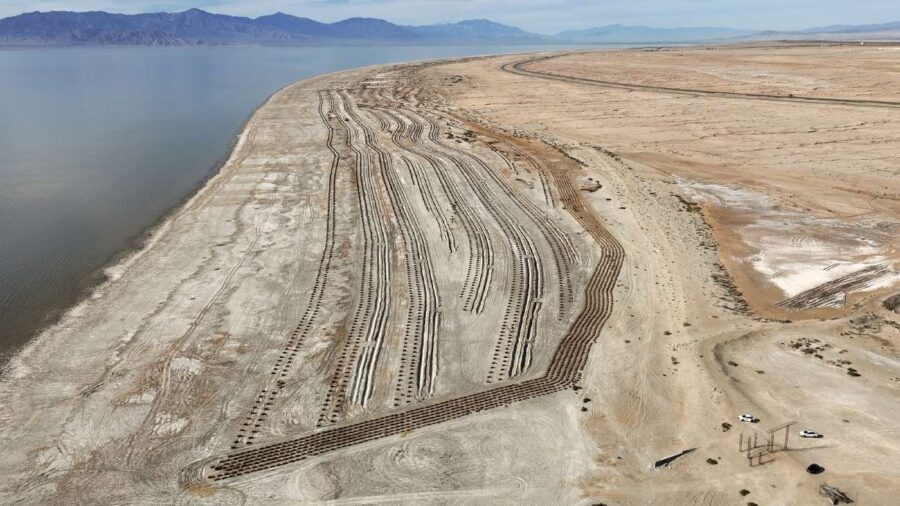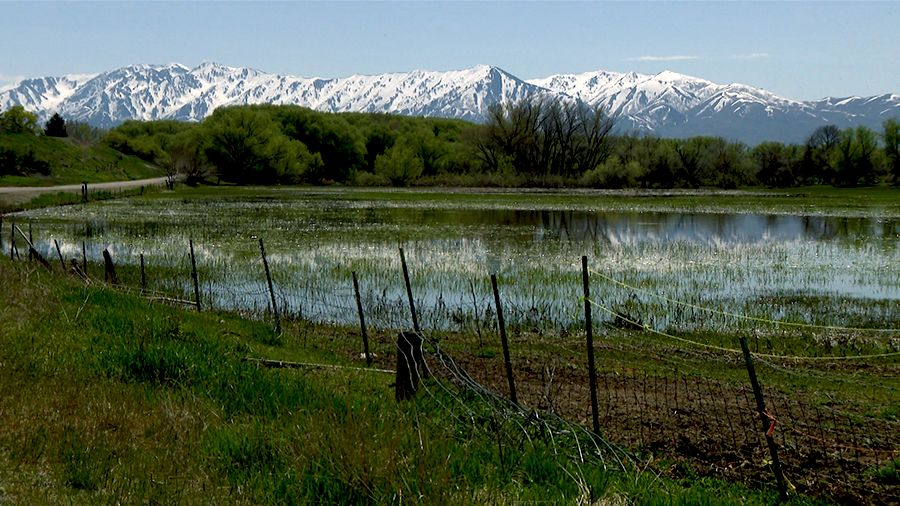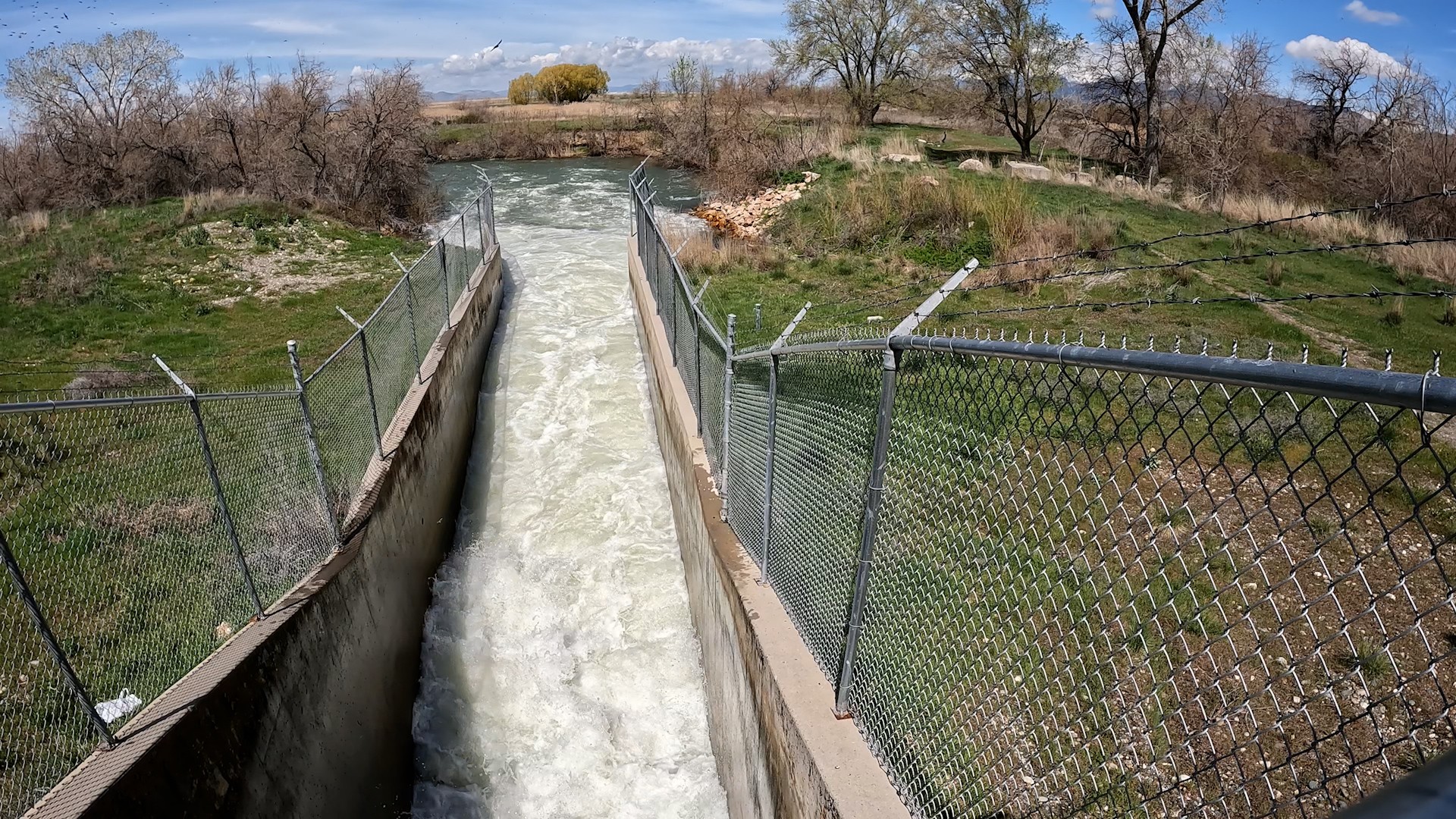Utah agriculture wants more support and research to reach future water-saving goals
Aug 9, 2022, 12:43 PM | Updated: Oct 10, 2022, 11:27 am
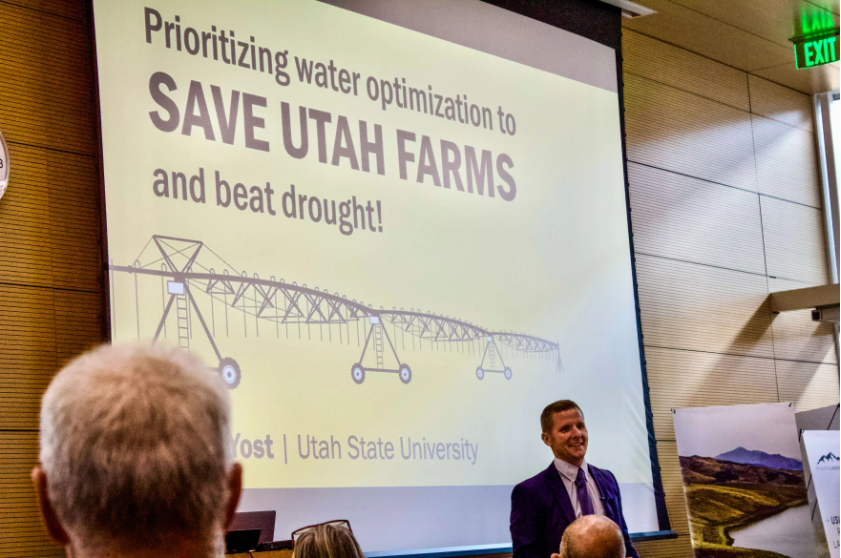
(Saige Miller/KUER)
(Saige Miller/KUER)
The Utah Legislature, the federal government and community members are all weighing in on how best to address the ongoing drought, but all eyes are on Utah’s agricultural industry to reduce its water usage.
According to Utah State University, agriculture uses more than 85% of the state’s water supply. It also accounts for roughly $1.8 billion worth of Utah’s revenue.
Rep. Casey Snider, R-Logan, a dairy farmer himself, told a modest crowd of roughly 40 people at a USU Research Landscapes event that there’s “conflict” about how important agriculture is to the state.
Snider said all stakeholders need to work together to address and solve Utah’s water problems.
“We need research. We need to solve difficult challenges with education, and learning and time and pragmatic solutions,” Snider said.
In a bad drought year, Matt Yost, an assistant professor of water, land and soil science at USU, said many farmers either underwater their crops or forgo watering entirely. So, he set out to research how farmers could best utilize water without sacrificing crop production.
One of the biggest factors for water optimization is how farmers decide to irrigate their land. Some methods, like flood irrigation, use a lot of water, but it’s easier to recover that water, Yost said. Sprinkler systems use less but it’s harder to recuperate the resource.
Yost admits he hasn’t found the perfect way to irrigate that saves water and doesn’t reduce yield, but tools are available to measure when a crop needs to be watered.
Over three years, Yost looked at weather stations, automating irrigation and soil sensors to decide when watering was needed on 12 Utah farms.
“The tool that worked most successfully at reducing water use was the soil moisture sensors,” Yost said. “This makes sense because it’s a direct measurement in the field of what the water need is.”
A farm in Sevier County was able to save about 10% of the water used to nurture one field, Yost said. Soil sensors cost about $15 per acre, according to his calculations.
USU created a technology calculator to help farmers budget if they can afford irrigation updates.
Yost said more incentives are needed to get farmers on board. He suggested looking into water markets where water users can trade, lease and sell water or switching from alfalfa production to a less water-intensive crop. More research is also needed, he said, to identify the best methods that save water and keep agriculture production afloat.
Utah has made a push in recent years to study agricultural soil health. In 2021, the Legislature passed a bill that created the Utah Soil Health Program. The purpose is to adopt healthy soil practices to sustain agricultural production. Farmers who opt-in to the program receive incentives, like grants, to learn, research and implement soil monitoring tools on their land.
Utah lawmakers also funded the Water Optimization Program with federal pandemic dollars, which provides farmers with money to research ways to best save water while maintaining production.
However, no one is required to participate in the programs. And that’s something Rep. Snider sees staying the same.
“At the end of the day, water is an asset that individuals own,” Snider said. “So you can only go so far in the Legislature, and the state isn’t going to get to a position where I think you’re going to see us mandating.”
___
This article is published through the Great Salt Lake Collaborative, a solutions journalism initiative that partners news, education and media organizations to help inform people about the plight of the Great Salt Lake — and what can be done to make a difference before it is too late. Read all of our stories at greatsaltlakenews.org.


